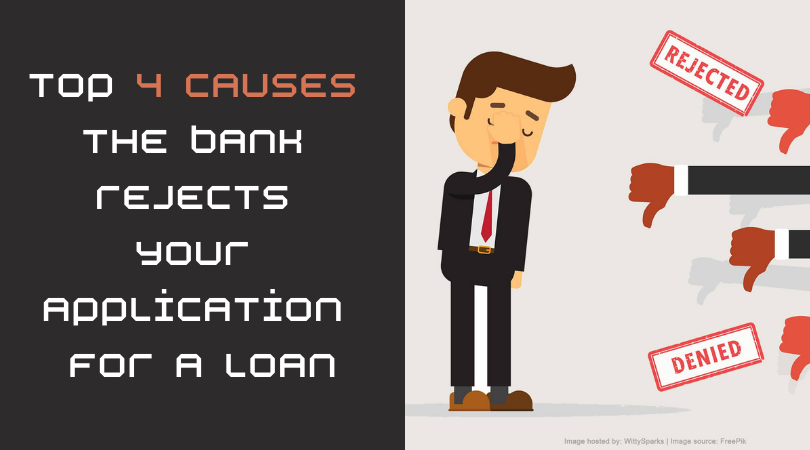 The most well-known reasons for refusing a bank loan are the borrower’s lack of income to service the loan, insufficient collateral, inconsistency between the stated and real objectives of the loan, poor credit history of the company, etc. But besides them there may be others, much less obvious. And it is useful for the borrower to know them in order to avoid refusals.
The most well-known reasons for refusing a bank loan are the borrower’s lack of income to service the loan, insufficient collateral, inconsistency between the stated and real objectives of the loan, poor credit history of the company, etc. But besides them there may be others, much less obvious. And it is useful for the borrower to know them in order to avoid refusals.
Cause #1: Undesirable industry
Before applying for a loan, check whether the selected bank works with your industry. This can be understood by the bank’s public statements, which give the share of loans falling on different industries. If your industry is currently blacklisted by the bank, it is not realistic to find out about it in advance. But you can try to analyze the situation. If the bank’s clients in this industry have recently had major defaults or serious delinquencies, then the bank has certainly increased reserves for the industry and stopped taking new borrowers from it.
It also happens that a bank has exhausted the limits of lending to a particular industry, it needs a diversified loan portfolio for balanced risk management. So, for example, now many banks have exhausted the limits on the construction industry. How to prevent the risk of failure?
Ask the manager at the bank who works with your company in detail about the restrictions on your industry and the availability of limits. No sane person wants to work in vain, and they will definitely tell you if it is better to wait for an appeal or go to another bank.
Advice: Apply to several banks at once. This way you will reduce the risk that you will be left without money, and save time and effort.
Cause #2: The bank is not in size
Another common reason for refusal is the discrepancy between the size of the company and the bank: when a very large organization comes to a small bank or vice versa. Credit institutions (with the exception of the largest universal banks) work with a certain category of customers and often indicate a credit limit. If your business is much larger or much smaller, the bank will consider the application for a long time and eventually refuse with the wording “does not meet the requirements of the bank”.
Advice: try to get into the middle of the limits. If you need an amount slightly less than the minimum or slightly more than the maximum set by this bank, look for another one. Quite a lot of banks work with a specific category of borrowers, and with a thorough search there will be 5-10 options.
Cause #3: Speaking in different languages
Business speaks the language of money and profit, and the bank speaks the language of risks, repayment and collateral. To make a decision, it is not enough for the bank to be sure that the borrower has the appropriate collateral or surety. The credit institution studies the retrospective financial data from the financial statements and the prospects for profitability of the project, as well as the plan for achieving goals and the company’s ability to manage risks. The source of the loan repayment is the company’s profit, not the collateral that the bank will have to sell in case of default.
For example, a bank may refuse a loan to a large developer if he does not have a reasonable sales plan in case of falling prices, does not work out a financial model. What to do?
Advice: Carefully prepare the financial model before applying for a loan. Remember: the bank looks at the regularity of the receipt of money to the settlement account, the company’s profit and the conservativeness of financial plans. Don’t embellish the numbers, it always causes a negative reaction.
Take expert colleagues to the negotiations, who will be able to tell in detail for what purposes the loan is taken out, in what terms it will be returned. Banks love the transparency of forecasts and data.
Cause #4: Errors in the collection and transfer of documents
Often, the documents for submitting a loan application to the bank are prepared by an accountant. If he has to request documents from the legal, production and other divisions of the company, he does not check them for technical errors and inconsistencies.
Next, the documents are sent to the bank’s credit manager, who does not check the information received from the client, but immediately sends it to different services of the bank. And when the papers reach, for example, the credit committee, it may turn out that there are illegal alterations in the collateral documents or other errors or contradictions that could easily be corrected at the stage of filing documents. And these errors affect the credit decision-making. A real example: a developer applied to a bank for a loan of a greater amount, and after 3 months of consideration at the stage of construction expertise, it turned out that the building area in the permits and in the current project documentation does not match. It would take a year to get a new permit, and the developer could not build without a loan. What to do?
Advice: Meet personally with the management of the bank or credit department. This will ensure a more attentive attitude to your documents. A loan is not only numbers and documents, but also communication. The purpose of communication is for the bank to have a deep understanding of your business.
Well, it’s always better to send applications to 2-3 different banks to increase the likelihood of approval.
Category: General
Tags: cash advance, finance, loan